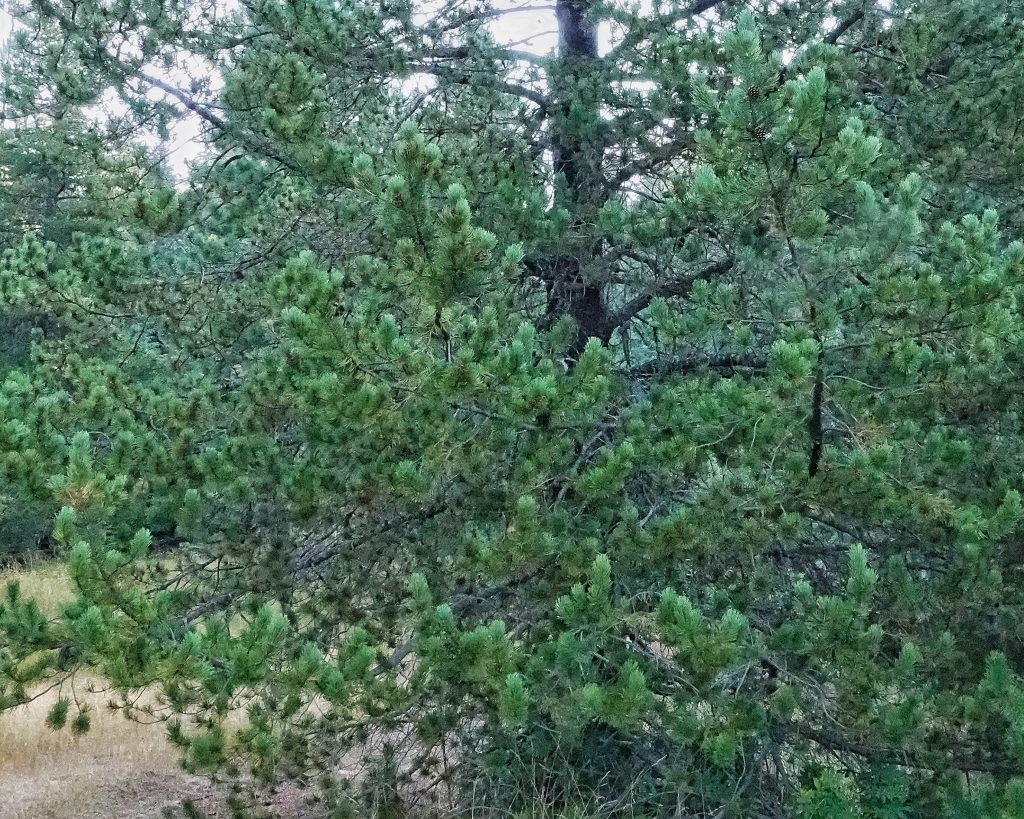
As I’ve mentioned before, I am not particularly good with trees, especially conifers, and I’ve had a particular mental block about separating Lodgepole from Ponderosa pines (as well as Douglas Fir and Western Hemlock, but those are for another set of profiles). On a recent camping trip to the area between the Little White Salmon and Wind rivers I noticed that there were at least 6 different conifers arrayed around the meadow I was camped near, many of which were standing alone so that I could get good, isolated photographs, so I set out to do something about this big gap in my botanical identification knowledge, starting with Pinus contorta and Pinus ponderosa.
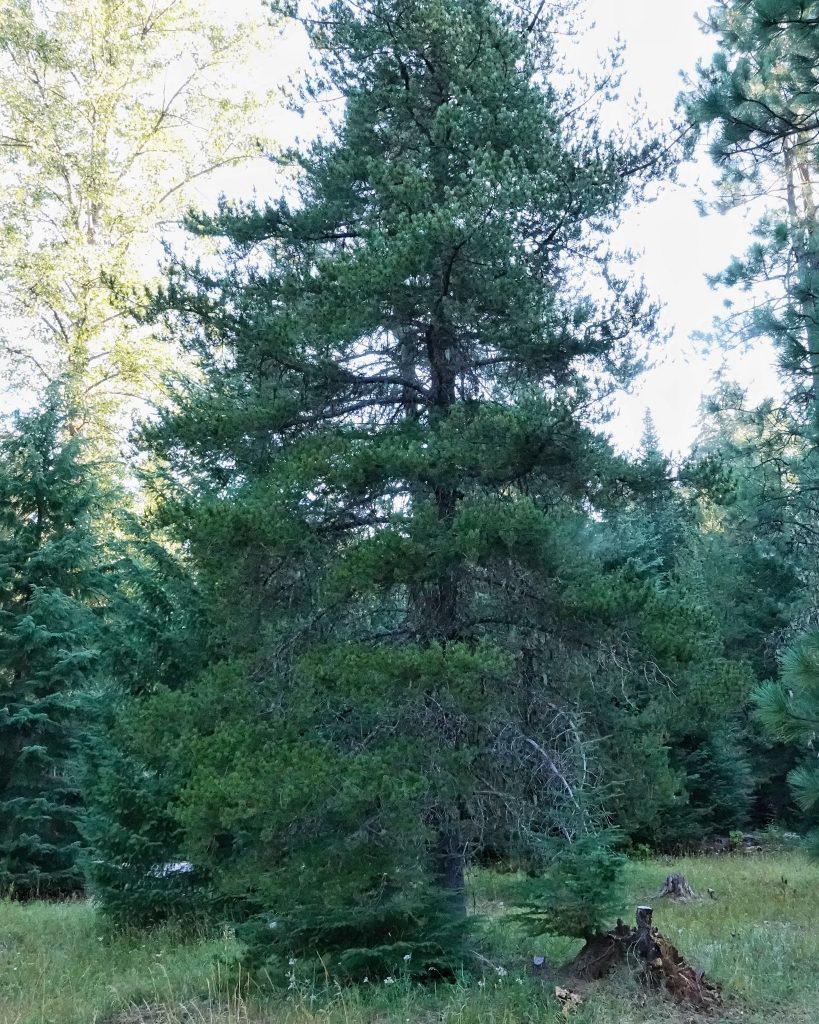
And it turned out to be pretty darn easy to tell the two apart (slaps himself on the forehead). I’d like to think it was because I hadn’t seen them side by side before, but I’d been in this very meadow at least five times previously, so it’s obviously just a lack of observation on my part. First for the basics- Lodgepole Pines have needles that are 1.5-3” long, with two per fascicle (bunch), while Ponderosa Pines have needles that are 5-10” long, with three per fascicle (although there are occasionally only two). If one can actually get a needled branch in hand, the difference is obvious. But even from a distance they can be told apart quite easily, because of the discrepancy in the size of the needles, and because Lodgepole needles are persistent for 4-8 years they present a fairly even appearance at the end of the branches, whereas Ponderosa needles only persist for 2-3 years and thus present a tufted appearance near the branch tips.
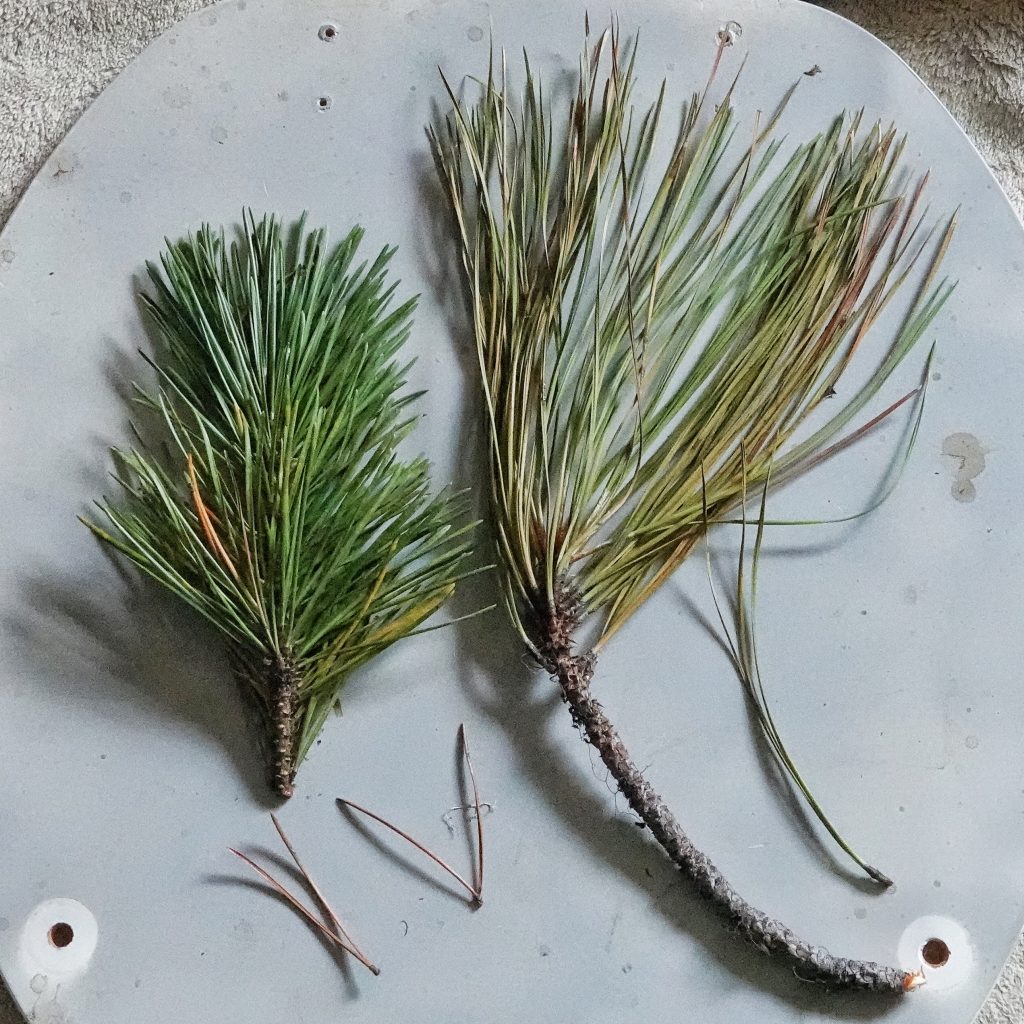
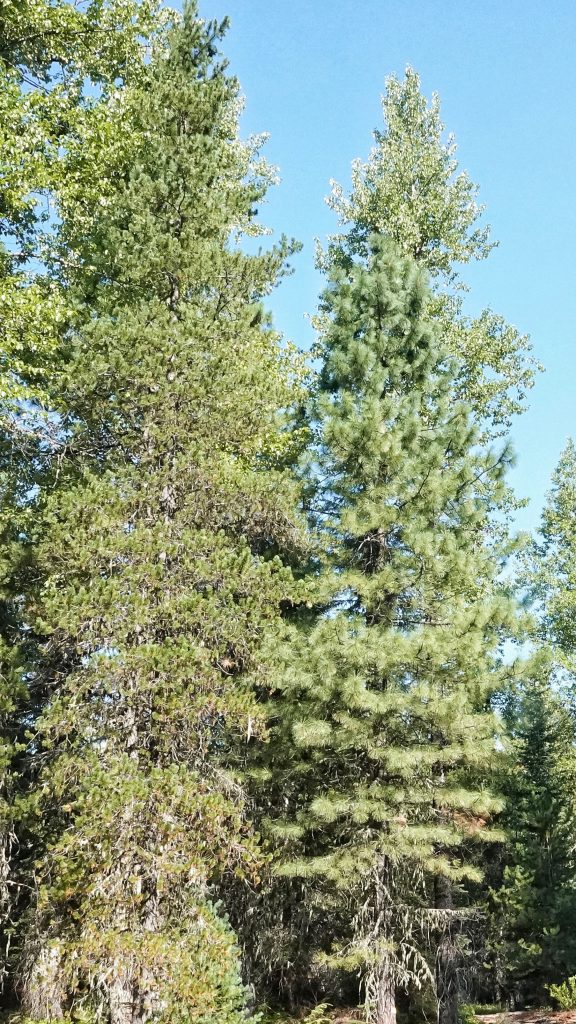
Lodgepole Pines are geared towards proliferating after fires. They have serotinus cones (which don’t open to disperse seed until they’ve been subjected to the heat of a fire), as well as regular cones, so that after a fire has cleared the competition and opened an area to sunlight (Pinus contorta is not a shade tolerant species) dense stands of new trees soon begin to spring up. Helping to fill in the gaps and replace young trees that may be browsed to death is the fact that young Lodgepoles can produce fertile cones in only 7-10 years.
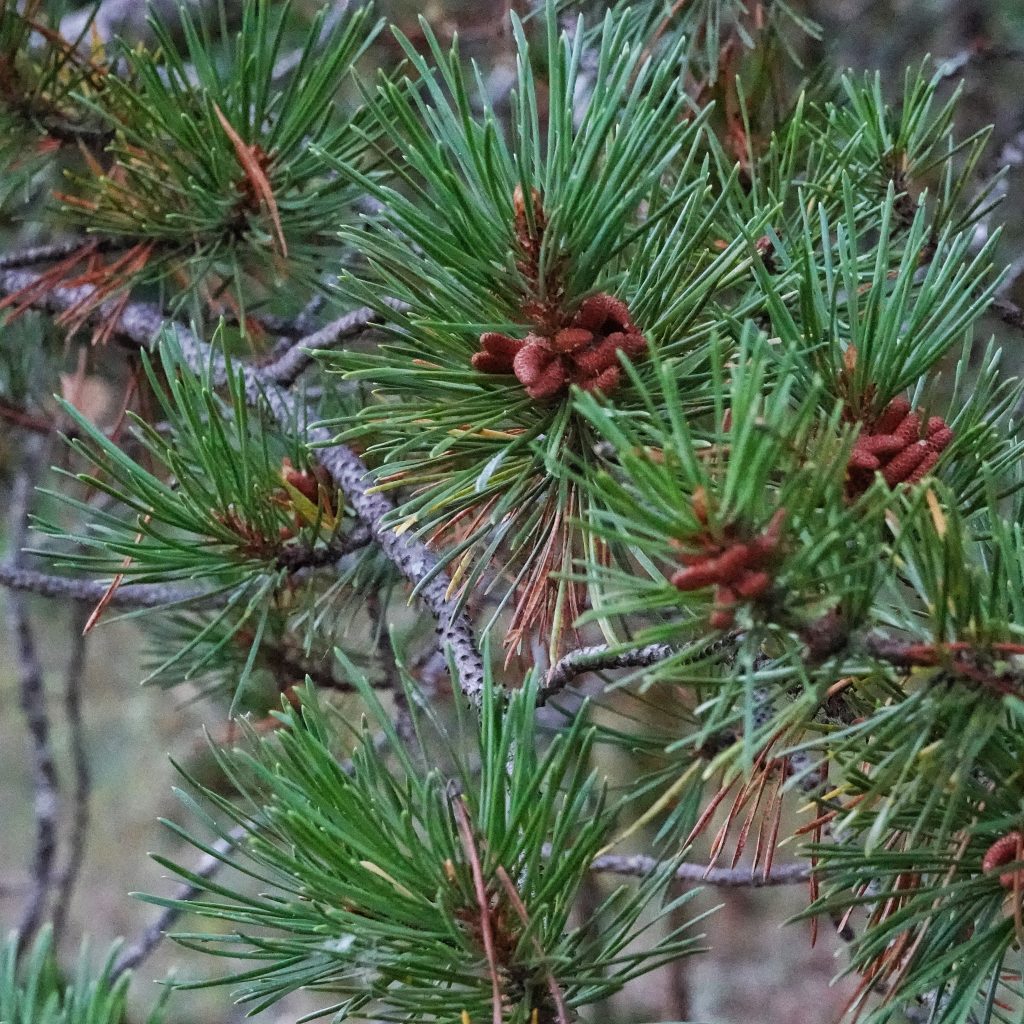
As is no doubt obvious from the name, these straight trunked trees were used extensively by nomadic, indigenous peoples for the framework of their lodges. They also used them for the travois they built as sledges to transport materials and other goods, as well for furniture and utensils. The pitch was chewed as gum, used to waterproof and seal moccasins and to hold the joints of arrows, lances, and other implements in place before being bound with twine, as well as to treat ailments ranging from open wounds to heart troubles and respiratory illness. The inner bark (cambium) was used as a food source, and a tea was made from new growth on branch tips. For a more complete list of usages please see the Native American Ethnobotany Database, which has 131 entries for Pinus contorta. Lodgepole Pine is, of course, also heavily harvested commercially in our day and age.
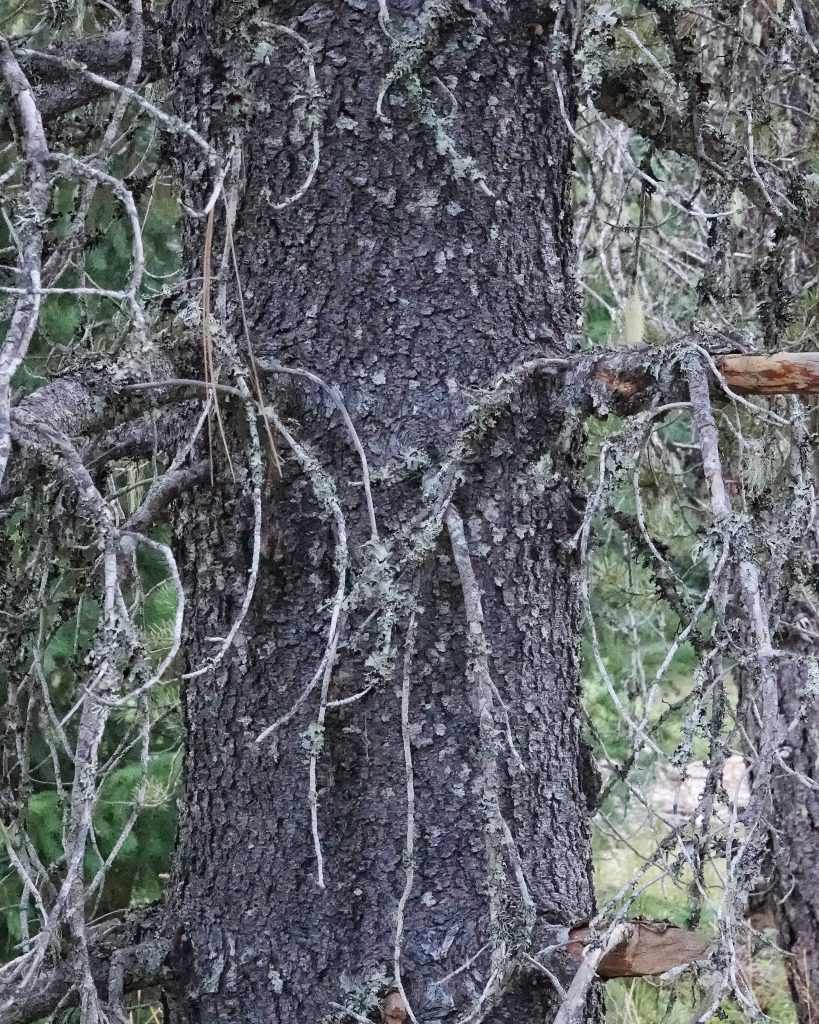
In this century a native bark beetle, Dendroctonus ponderosae (Mountain Pine Beetle) has begun to run amok in pine forests of the west, killing millions of Lodgepole and Ponderosa pines. Normally they attack diseased or dying trees, but when their numbers grow large enough they begin to infest healthy trees. This rise in numbers is probably due to a combination of fire suppression, monoculture planting, and climate change, since the beetles prefer larger trees, like them all grouped closely together for easy access and plentiful food, and are killed by fires and very cold (<-30⁰F) temperatures. The damage the larvae do by eating the phloem is exacerbated by the beetles introducing blue-stain fungi (a catchall term for many fungi that attack tree sap; primarily Ophiostoma clavigerum and O. montium in the case of the Mountain Pine Beetle) beneath the bark. These spores reproduce rapidly and block conductive vessels, so that the tree cannot produce enough sap to defend itself against the beetle. Between the larvae and the fungus the tree cannot transport water and nutrients into the upper tree and soon dies. There are good explanations of the whole process here, here, and here.
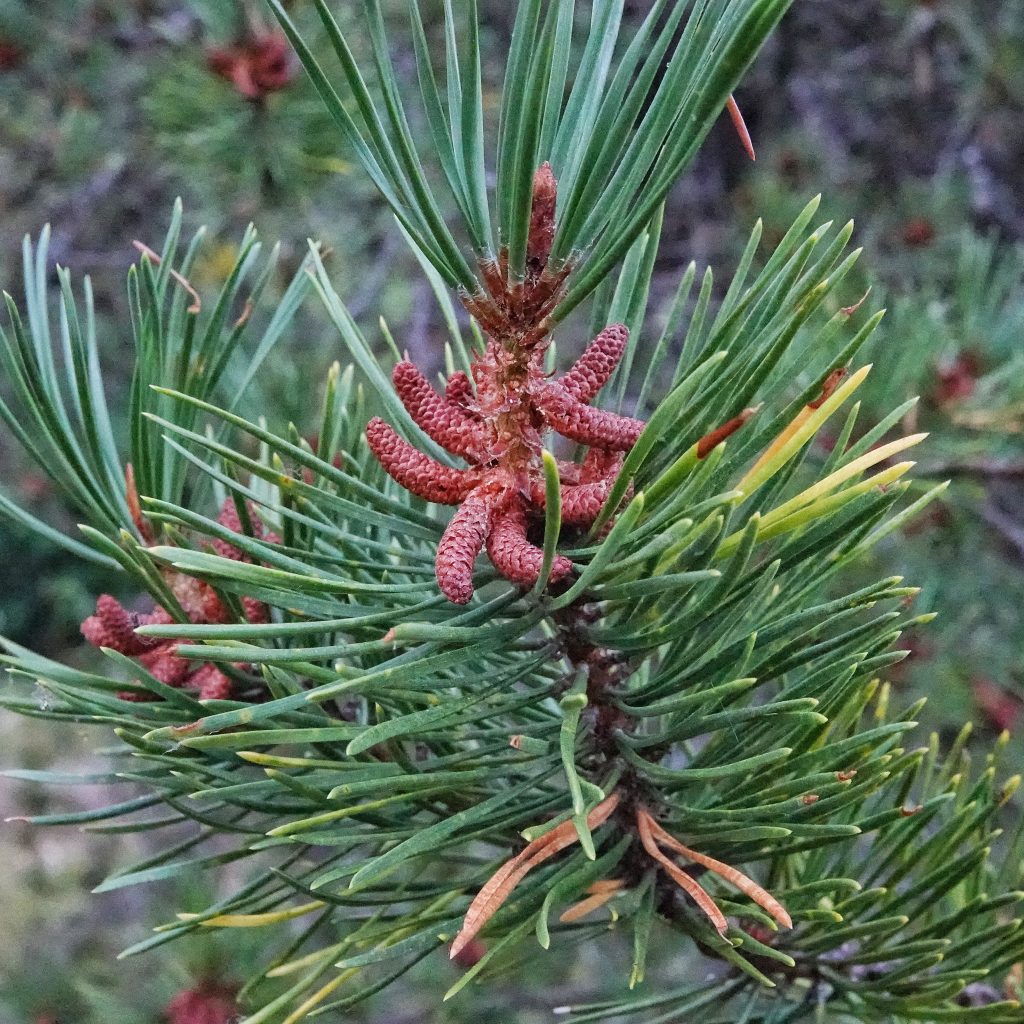
There are 3 variants of Pinus contorta- P. c. var. contorta (Shore Pines), which is the type variant, and which grows in coastal areas; P. c. var. latifolia, the Rocky Mountain Lodgepole Pine, and P. c. var. murrayana, Sierra Lodgepole Pine, which seem to have a confused taxonomy, with Flora of Oregon and Flora of the PNW saying opposite things about the range of latifolia in our region (possibly because the authors of Flora of Oregon don’t believe murrayana to be a valid variant), both of which grow with similar forms in similar habitats (drier, interior, montane) and feed virtually the same range of bugs and other critters. Most of what I’m saying in this profile applies to both Shore Pines and Lodgepole Pines, except for the fact that, being in different habitats, they feed a slightly different set of animals, as well as having somewhat different growth rates and forms. One of the biggest differences is that Shore Pines, being smaller and more contorted, are seldom targeted for commercial harvest.
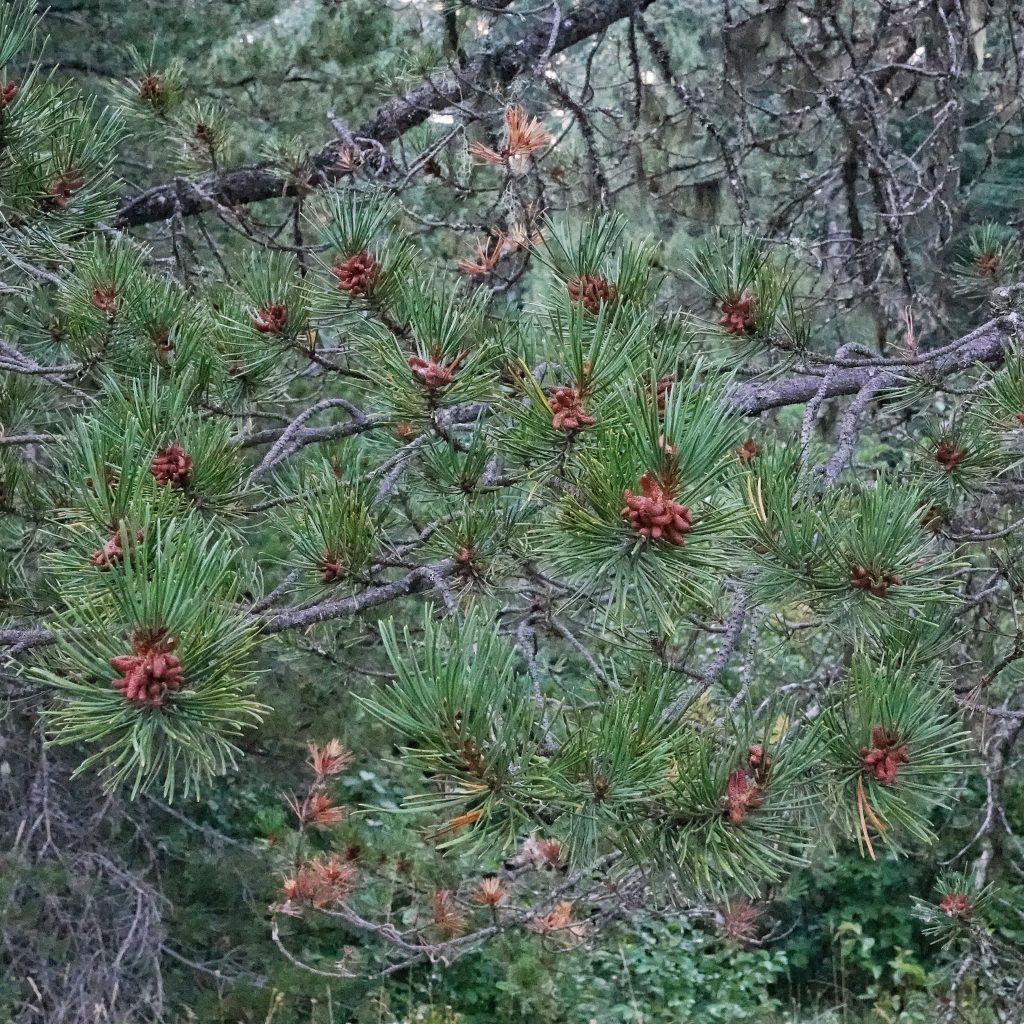
I should note that conifers belong to a group called the Gymnosperms (or more properly Acrogymnospermae, which is monophyletic and only includes species that are still extant), and Gymnosperm is from the Latin words for ‘naked seeds’, because these plants do not produce the seed embryos within an ovary. They are one of the oldest plant lineages, first appearing in the Early Carboniferous period about 350 million years ago, arising after the ferns but predating flowering plants, and there were conifers on the scene by 320 million years ago. Acrogymnospermae’s ranking would roughly correspond to the old taxonomic term superphylum, and the conifers would be in their own phylum, Pinophyta, although the term they use nowadays is division. I don’t really understand the term division, and it doesn’t fit into my kingdom, phylum, class, order… taxonomy, so I stubbornly stick with phylum. It’s not often that I can add a whole new phylum to these profiles.
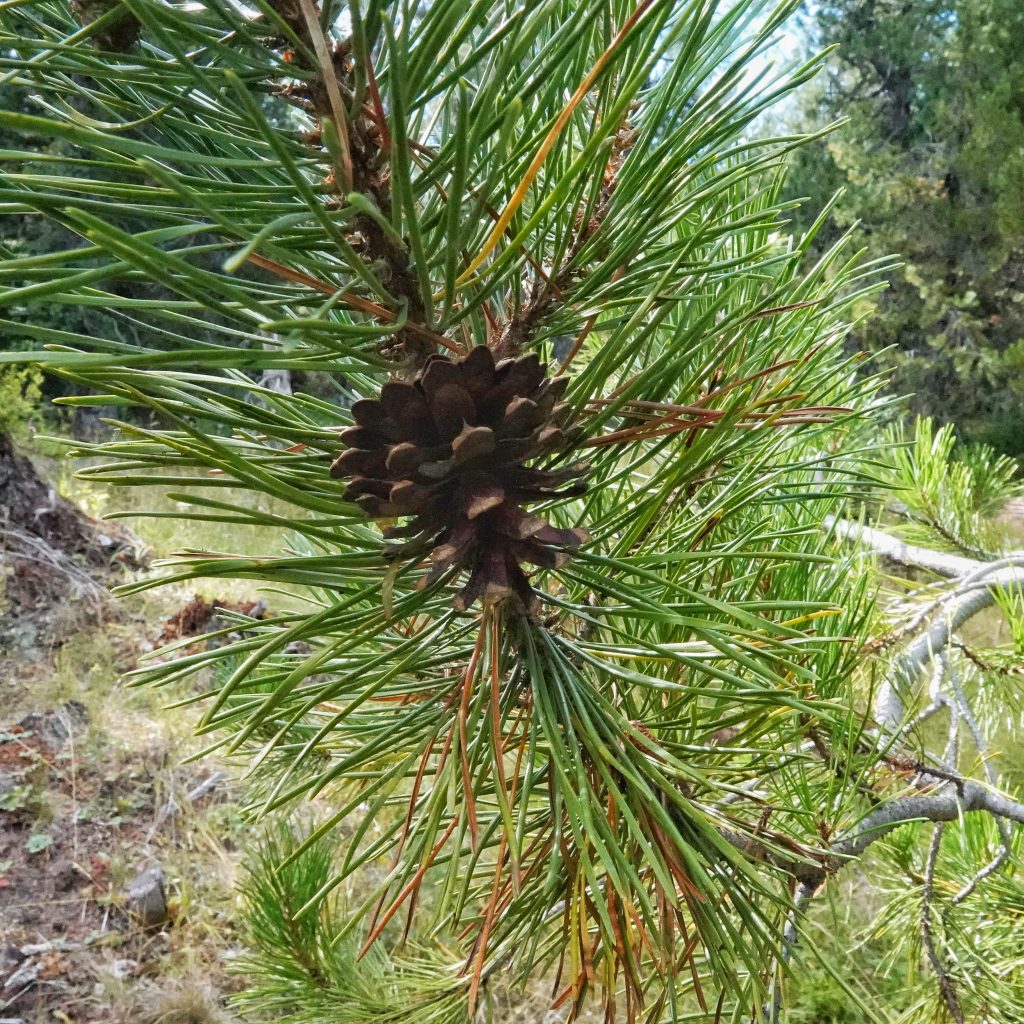
Description-Medium sized (up to 100’ tall and 2’ in diameter) straight trunked tree, with dark, scaly bark, and two needles per fascicle; needles are 1-3” long; cones are 1-2” long, and have a spike on each scale; both open and unopened cones found on any given tree.
Similar species-This is the only 2 needled pine that is native to our region; Ponderosa Pines have needles 5-10” long in groups of three, and bark in large, scaly plates that resemble jigsaw pieces; white pines have needles in groups of 5.
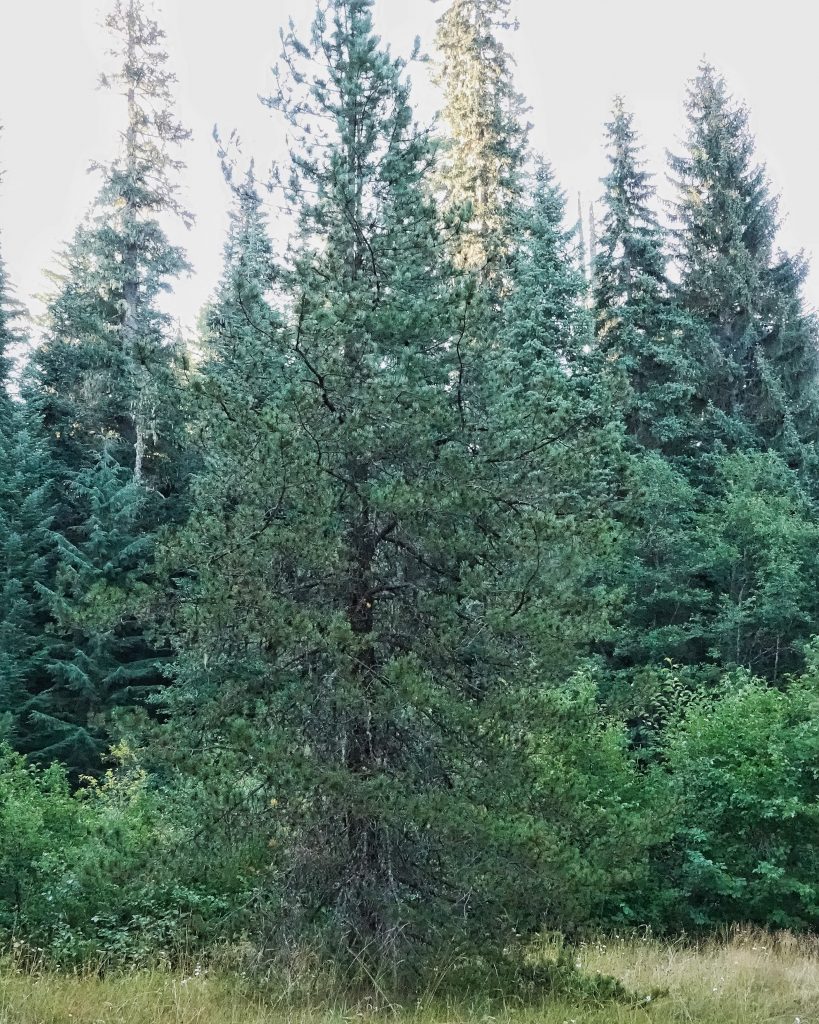
Habitat-Shade intolerant; well drained soil in open, mesic, montane areas, mostly above 2,000’ (Lodgepoles), or moist to mesic coastal lowlands (Shore Pines).
Range-Western North America; in our region Lodgepole Pines are found in the Cascades, Blues, Wallowas, Ochocos, Siskiyous, and the Rocky Mountains and their associated ranges and foothills, while Shore Pines are mostly found along the coast.
Reproductive timing-Cones form in spring, mature in August/September.
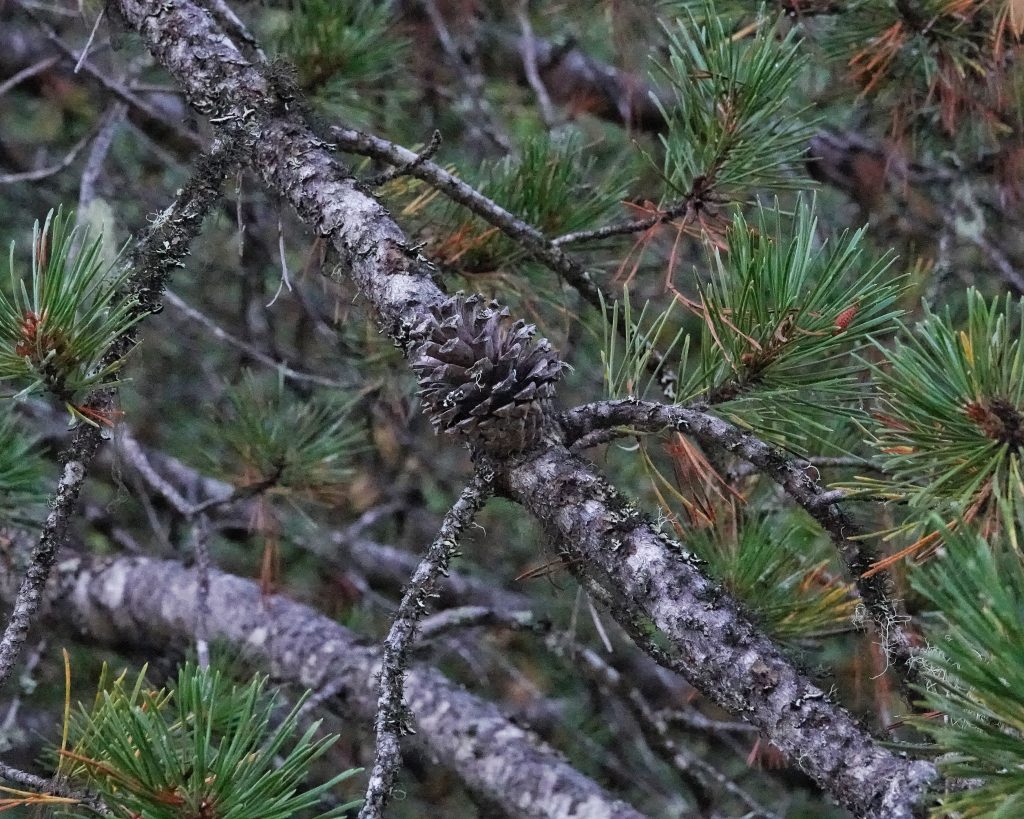
Eaten by-Larval host for the leaf mining moths Coleotechnites ardas, C. biopes, C. milleri, C. starki, Epinotia aridos; larval host for Lophocampa argentata, Neoalcis californiaria, Chionodes abella and probably other Chionodes sp. as well, Coloradia pandora, Caripeta aequaliaria, Gabriola dyari, Macaria adonis, Lithophane innominata, Eupithecia sp. , Hydriomena sp., and too many more to name; the butterflies Neophasia menapia (Pine Whites) and Callophrys eryphon (Western Pine Elfins); larvae of Dendroctonus ponderosae (Mountain Pine Beetles), and larvae of the long-horned beetle Trichocnemis spiculatus; adults and larvae of the hump-winged cricket Cyphoderris monstrosa (Great Grigs); finches, pine siskins, nuthatches, mourning doves, band-tailed pigeons, quail, grouse, crossbills, grosbeaks, Clark’s nutcrackers, jays, and other birds eat the seeds, as do ground squirrels, arboreal squirrels, and chipmunks; grouse and deer eat young foliage; porcupines and mice eat the bark.
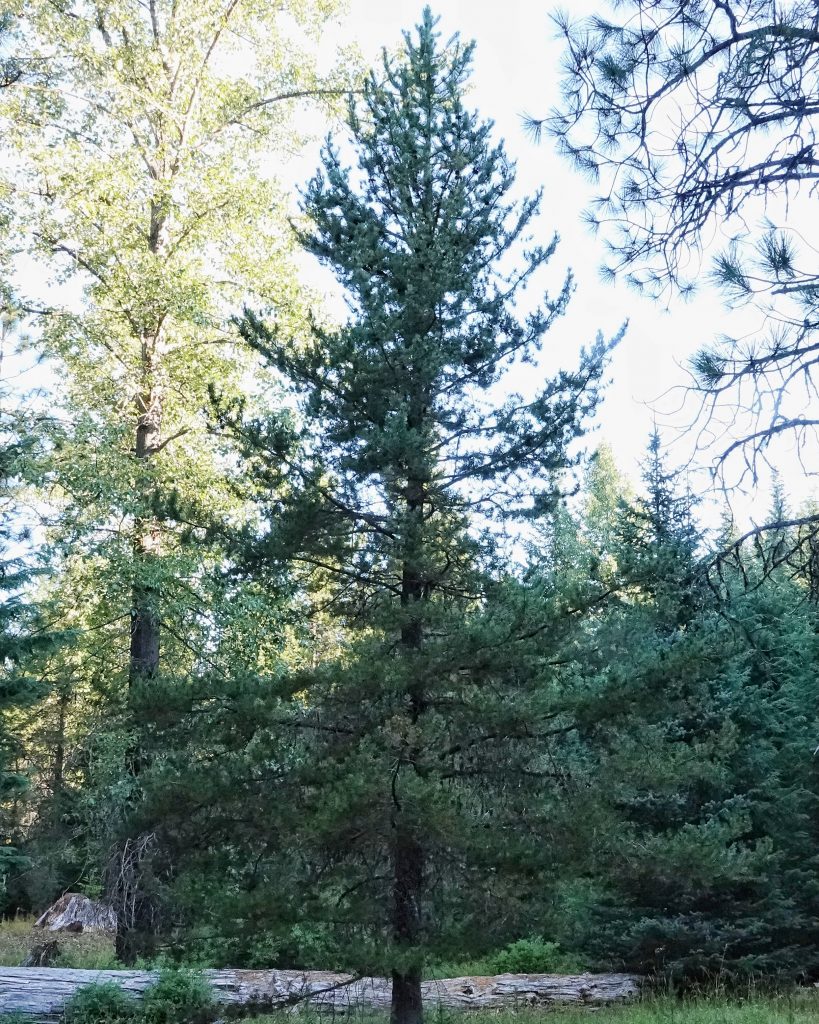
Etymology of names–Pinus is from the Latin word for ‘pines’. The specific epithet contorta is from the Latin word for ‘twisted’, and either refers to the mature form of the Shore Pines David Douglas first collected and for which the species is named, or for the form of the young shoots.
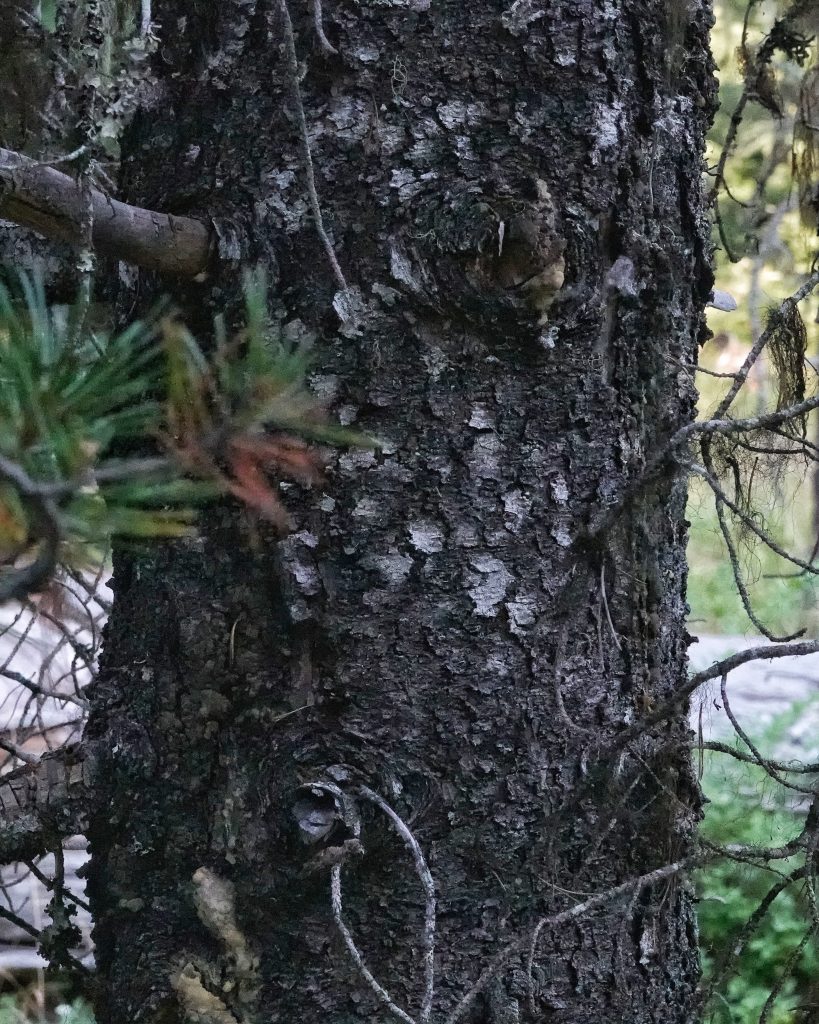
https://www.conifers.org/pi/Pinus_contorta.php
BRIT – Native American Ethnobotany Database
Lodgepole pine (Pinus contorta) – Forest Research and Outreach
https://www.wildlandnw.net/lodgepole-pine
https://www.fs.usda.gov/Internet/FSE_DOCUMENTS/stelprdb5299324.pdf
https://en.wikipedia.org/wiki/Mountain_pine_beetle
https://en.wikipedia.org/wiki/Blue_stain_fungi
https://en.wikipedia.org/wiki/Travois
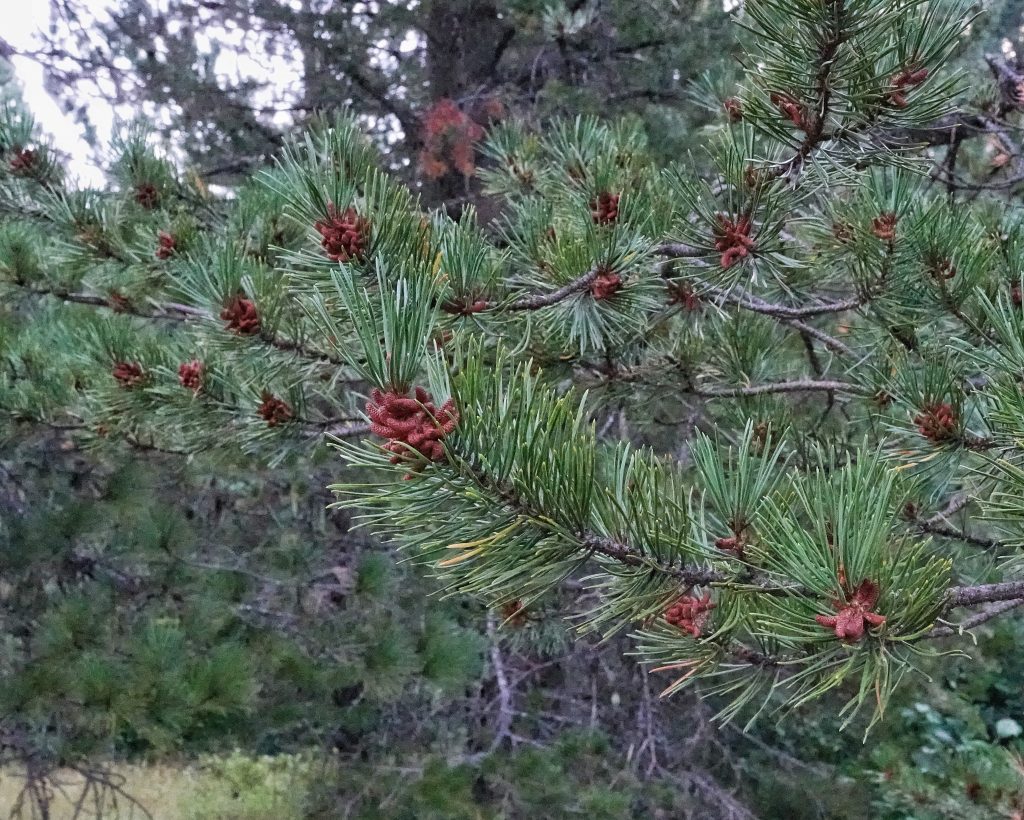
3 thoughts on “Pinus contorta (Lodgepole Pine)”